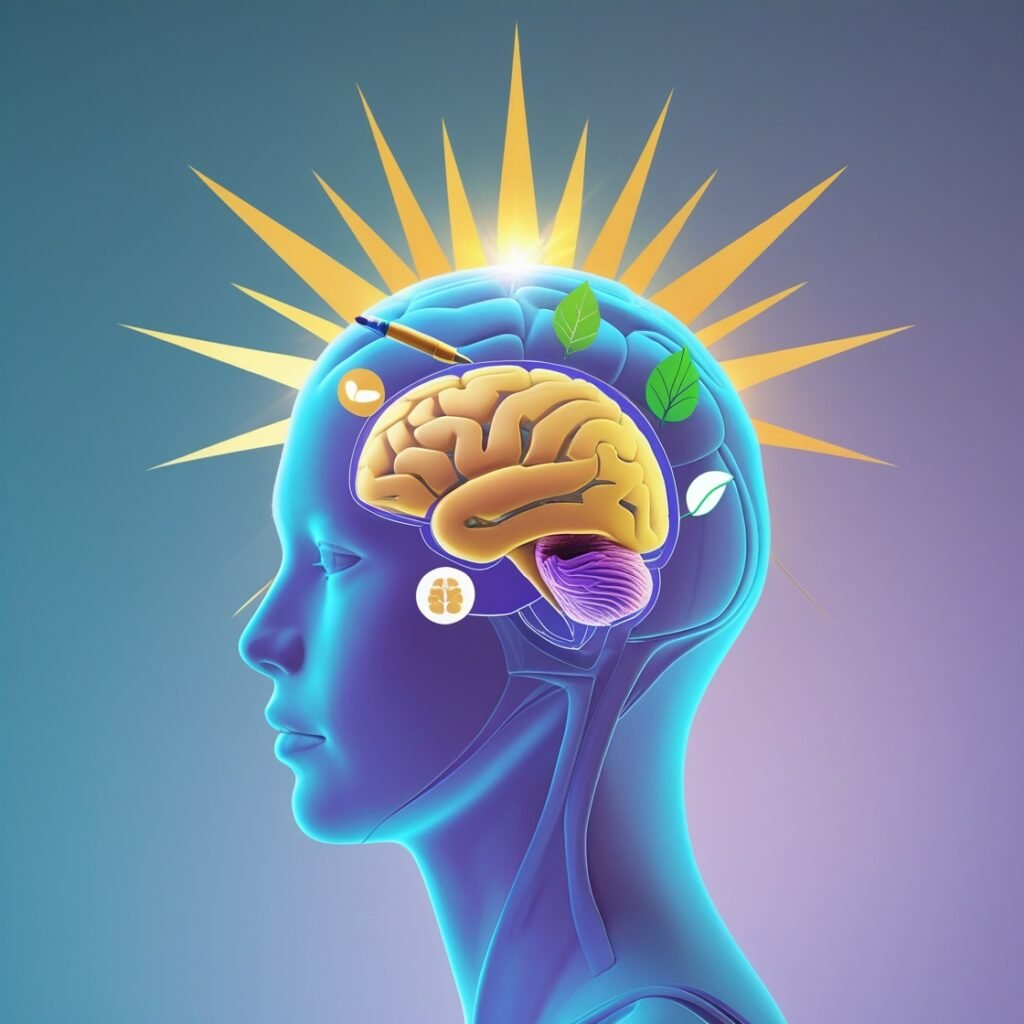Table of Contents
Introduction to Mental Health Tips
Mental health isn’t just a buzzword—it’s the foundation of how we think, feel, and navigate life’s challenges. Yet, in a world that never slows down, taking care of our emotional well-being often falls to the bottom of the priority list. How often have you pushed through stress, ignored burnout, or dismissed your own need for a break? You’re not alone.
The good news? Small, intentional changes can make a big difference. Whether it’s setting boundaries, practicing mindfulness, or simply learning when to ask for help, nurturing your mental health is within reach. This guide isn’t about quick fixes—it’s about sustainable strategies to help you build resilience, find balance, and thrive even on tough days.
Ready to take the first step? Let’s explore practical, science-backed mental health tips.
Mental Health Tips
Let’s delve into the main mental health tips that you really need to know. Next, we will discuss the first tip:
Mental Health Tips: Tip “1”-Prioritize Self-Care for Emotional Well-Being
Let’s be honest—when life gets hectic, self-care is often the first thing we sacrifice. But here’s the truth: You can’t pour from an empty cup. Neglecting your emotional well-being doesn’t just lead to burnout; it affects every part of your life—your relationships, productivity, and even physical health.
So, how can you make self-care a non-negotiable part of your routine? It starts with small, intentional habits that add up over time.
1. Establish a Daily Relaxation Routine

Stress doesn’t disappear on its own—you have to actively unwind. Instead of scrolling through social media before bed (which often does the opposite of relaxing you), try:
- Deep breathing exercises – Just 5 minutes of mindful breathing can lower cortisol levels.
- Guided meditation – Apps like Headspace or Calm make it easy for beginners.
- A digital detox hour – Disconnecting helps reset your mind and reduce anxiety.
Think of relaxation as a skill, not a luxury. The more you practice, the better you’ll get at managing stress before it overwhelms you.
2. Nourish Your Body with Healthy Habits
Your brain and body are deeply connected. What you eat, how you sleep, and whether you move your body all play a role in your mental health.
- Eat mood-boosting foods – Omega-3s (found in fish and walnuts), leafy greens, and probiotics support brain function.
- Prioritize sleep hygiene – A consistent bedtime and a dark, cool room improve sleep quality.
- Move daily – Even a 10-minute walk releases endorphins, lifting your mood naturally.
You don’t need a complete lifestyle overhaul—just small, sustainable tweaks that make a big difference.
What’s one small self-care habit you can start today? Even five minutes counts. Your mind and body will thank you. Let’s go to the next tip of our mental health tips.
Mental Health Tips: Tip “2”-Build Strong Social Connections
Did you know loneliness can be as damaging to your health as smoking 15 cigarettes a day? Yet in our hyper-connected world, many of us feel more isolated than ever. The truth is, humans are wired for connection—meaningful relationships aren’t just nice to have, they’re essential for emotional resilience.
But how do you cultivate genuine connections in a world of surface-level interactions? It starts with being intentional.
1. Cultivate Meaningful Relationships (Quality Over Quantity)
Having 500 social media friends doesn’t equal real connection. Focus on depth instead:
- Schedule regular check-ins – A 15-minute call with a close friend does more for your mood than weeks of passive texting.
- Practice active listening – Put away distractions, make eye contact, and ask follow-up questions like “How did that make you feel?”
- Join communities with shared interests – Book clubs, volunteer groups, or fitness classes create natural bonding opportunities.
Pro Tip: Struggling to reconnect? Try the “2×2 Rule”: Reach out to two people every two weeks with a personal message.
2. Set Boundaries to Protect Your Energy
Not all relationships are healthy. Protecting your mental health sometimes means:
- Recognizing emotional vampires – Those who drain you with negativity or constant demands.
- Mastering the polite “no” – “I’d love to help, but I need to focus on [X] right now.”
- Creating tech-free zones – Designate meal times or evenings as device-free to be fully present with loved ones.
Remember: Boundaries aren’t selfish—they’re what allow you to show up fully for the people who matter most.
Are you ready for the 3rd tip of the mental health tips?
Mental Health Tips: Tip “3”-Develop Healthy Coping Mechanisms
When stress hits, do you reach for unhealthy snacks, endless scrolling, or bottled-up emotions until they explode? You’re not alone—we all develop automatic responses to stress. But what if you could rewire those reactions into healthier habits that actually serve you?
The secret isn’t eliminating stress (that’s impossible), but building an emotional toolkit that helps you navigate challenges with resilience. Let’s explore two powerful approaches.
1. Practice Mindfulness Meditation

You don’t need to sit cross-legged for hours to benefit. Mindfulness is simply about being present:
- The 5-5-5 Grounding Technique—When overwhelmed:
Name 5 things you see
4 things you feel
3 things you hear
2 things you smell
1 thing you taste - Micro-meditations—Even 60 seconds of focusing on your breath between meetings can reset your nervous system
- Body scans—Lie down and mentally check in with each body part, releasing tension
Pro Tip: Try pairing mindfulness with daily routines—practice being fully present while washing dishes or walking your dog.
2. Channel Emotions Through Creative Outlets
Your emotions need an exit ramp. Creative expression acts like a pressure valve for your psyche:
- Journaling prompts for tough days:
“What am I really feeling under this anger/frustration?”
“What would my best friend say to me right now?” - Art as therapy – Doodle, paint, or collage without judging the outcome
- Movement releases emotion – Put on music and dance it out, or try cathartic activities like punching a pillow
Unhealthy coping mechanisms (hello, stress shopping and binge-watching) provide temporary relief but long-term regret. The alternatives we’ve covered? They actually help you process emotions rather than avoid them. The 4th tip of the mental health tips is to manage stress and anxiety.
Mental Health Tips: Tip “4”-Manage Stress and Anxiety Effectively
Let’s face it—stress and anxiety aren’t going anywhere. Deadlines, responsibilities, and life’s curveballs will always exist. But here’s the good news: You can train your brain to handle pressure better. It’s not about eliminating stress completely (that’s impossible), but changing how you respond to it.
Think of stress like a wave—you can’t stop it, but you can learn to surf it. Ready to dive in?
1. Break Tasks into Manageable Steps (The Anti-Overwhelm Method)
When your to-do list feels like a mountain, your brain goes into panic mode. Here’s how to trick it into calm:
- The “2-Minute Rule”— If a task takes less than 2 minutes, do it immediately. If it’s bigger, break it into tiny steps:
Example: Instead of “Clean the entire house,” try “Put away dishes → Wipe counters → Vacuum living room” - Time blocking—assign specific chunks of time to tasks (even 25-minute Pomodoro sessions help)
- Brain dump first—when overwhelmed, write EVERYTHING swirling in your head on paper—then prioritize just 3 key items
Pro Tip: Anxiety loves vague thoughts. The more specific you get with planning, the smaller stress becomes.
2. Use Breathing Exercises for Instant Calm (No Meditation App Needed)
Your breath is a remote control for your nervous system. Try these science-backed techniques:
- Box Breathing (Navy SEAL-approved):
Inhale 4 seconds → Hold 4 → Exhale 4 → Hold 4
Repeat 3-5 times - 4-7-8 Method (For Instant Sleep or Anxiety Relief):
Inhale 4 → Hold 7 → Exhale 8 - Humming Breath (Triggers Relaxation Fast):
Exhale while humming like a bee—the vibrations stimulate your vagus nerve
Fun Fact: Just 3 minutes of deep breathing can lower blood pressure and reduce cortisol by up to 20%.
Here’s what most people miss: Stress isn’t just in your head. It’s stored in your body too. That’s why physical strategies work so well:
- Progressive muscle relaxation – Tense/release each muscle group from toes to head
- Cold water splash – Triggers the “dive reflex” to reset your heart rate
- Weighted blankets – The deep pressure mimics a therapeutic hug
Quick Challenge: Pick one technique above and use it the next time you feel stress creeping in. Your nervous system will thank you.
Our 5th tip of the mental health tips “Seek Professional Help When Needed” comes next.
Mental Health Tips: Tip “5”-Seek Professional Help When Needed
Let’s clear something up right away: Seeing a therapist doesn’t mean you’re “broken” or “can’t handle life.” In fact, it’s quite the opposite—recognizing when you need support is one of the strongest, most self-aware decisions you can make.
Think about it—you’d see a doctor for a persistent physical pain, right? Your mental health deserves the same care. So how do you know when it’s time to reach out, and what options exist? Let’s break it down.

1. Recognize When to Ask for Support (These Signs Matter)
Mental health challenges often creep in gradually. Watch for these indicators:
- Persistent changes in habits: Sleeping too much/too little, appetite shifts, or losing interest in hobbies
- Physical symptoms with no medical cause: Chronic headaches, digestive issues, or constant fatigue
- Emotional warning signs:
Feeling numb or detached
Irritability over small things
Constant “what’s the point?” thoughts - Relationship strain: Frequent conflicts or withdrawing from loved ones
Key Insight: If symptoms last 2+ weeks and interfere with daily life, it’s time to consider professional help.
2. Explore Affordable Mental Health Resources (Yes, They Exist!)
Cost and access shouldn’t be barriers to care. Here’s how to find support at any budget:
- Sliding-scale clinics: Many therapists adjust fees based on income
- Online therapy platforms: BetterHelp, Talkspace offer more affordable options
- Community resources:
Local universities with training clinics
Nonprofit organizations
Support groups (NAMI, DBSA) - Employee assistance programs (EAPs): Check if your workplace offers free sessions
Pro Tip: Many therapists now offer shorter “check-in” sessions at lower rates between full appointments.
Dispelling Therapy Myths
Let’s tackle common hesitations head-on:
- “Therapy is just talking about your feelings.”
Actually, modern therapy is skill-based—you’ll get practical tools to rewire thought patterns and behaviors. - “I should be able to handle this alone.”
Even therapists see therapists. It’s about gaining perspective, not weakness. - “It takes years to see results.”
Many people feel better after just a few sessions of targeted approaches like CBT.
Taking the First Step
Starting therapy can feel daunting, but remember:
- You don’t need to be in crisis to benefit
- It’s okay to “shop around” for the right therapist
- Telehealth makes trying it easier than ever
Action Step: Right now, jot down one small move toward seeking help—whether it’s researching local therapists or texting a friend for support in finding options. Progress over perfection.
“Asking for help isn’t a failure. It’s a strategic decision that you matter enough to invest in.”
Last but not least, this is the 6th tip of the mental health tips “Foster a Positive Mindset”.
Mental Health Tips: Tip “6”-Foster a Positive Mindset
Let’s be real—life isn’t always sunshine and rainbows. But here’s what’s fascinating: Your brain can be trained to find light even on cloudy days. A positive mindset isn’t about ignoring problems or forcing toxic positivity; it’s about developing mental habits that help you navigate challenges with more ease and less suffering.
Think of your mind like a garden. You can’t control what seeds blow in, but you can choose which ones to water. Ready to cultivate more positivity?
1. Challenge Negative Thought Patterns (Become Your Own Best Advocate)
We all have an inner critic, but you get to decide how much airtime it receives. Try these cognitive reframing techniques:
- The “Best Friend Test”:
Ask yourself: “Would I say this to my best friend?”
If not, rewrite the thought with the same compassion - Evidence Hunting:
When you think “I always fail,” list counterexamples - The “And” Technique:
Replace “I’m stressed AND I can’t handle this” with
“I’m stressed AND I’ve gotten through tough times before”
Science Spotlight: Studies show that practicing positive self-talk for just 3 weeks can physically change neural pathways in your brain.
2. Celebrate Small Wins Daily (The Micro-Joy Strategy)
Happiness isn’t just about big milestones—it’s built through daily micro-moments of appreciation.
- Create a “Wins Jar”:
Jot down tiny victories daily (even “got out of bed on time” counts) - The 5-3-2 Gratitude Practice:
5 things you see right now that bring comfort
3 things your body did well today
2 people who’ve shown you kindness recently - Progress Tracking:
Use a habit app or calendar to visually see your consistency
Your Mindset Makeover Starts Now
Positive thinking isn’t about denying reality—it’s about recognizing that while you can’t control everything, you can always control your next thought.
30-Second Challenge: Right now, name:
- One personal strength
- One recent tiny win
- One beautiful thing in your immediate surroundings
See? You’re already shifting your mindset. Keep practicing—it gets easier, and the rewards are life-changing.
Remember: Every thought you have is either building you up or wearing you down. Choose wisely, moment by moment.
Conclusion: Start YourJourney With Our Mental Health Tips
After exploring the Mental Health Tips, let’s pause for a moment. How do you feel right now? Overwhelmed by all these strategies? Hopeful? A little of both? That’s completely normal. Remember: Mental wellness isn’t about perfection—it’s about progress.
Think back to just one insight that resonated with you today. Maybe it was:
- The power of the 5-5-5 grounding technique when anxiety strikes
- How setting boundaries can actually deepen your relationships
- That seeking professional help is a sign of strength, not weakness
Here’s the beautiful truth: You don’t need to implement everything at once. In fact, you shouldn’t. Lasting change happens through small, consistent steps.
Your Action Plan
- Pick one strategy that feels doable this week
- Schedule it like you would an important meeting
- Celebrate when you follow through (this rewires your brain!)
A Final Thought About Mental Health Tips
Your mental health is the foundation for everything else in your life—your relationships, your work, your joy. And just like physical health, it deserves regular care and attention.
So here’s my question for you: What’s your one thing? That first small step you’ll take toward better mental wellbeing? Write it down right now. Put it on your phone. Tell a friend. Make it real.
Remember, you’re not alone in this journey. Every person you admire has faced challenges—what sets them apart is their commitment to keep growing. You’ve already taken a huge step by reading this far. Now, let’s turn that awareness into action.
Here’s to your mental wellbeing—may you nurture it with the same care you so freely give to others. The world needs you at your best.
P.S. Need a quick recap? Bookmark this page or save your favorite Mental Health Tips somewhere visible. Progress happens in the revisiting.
References
- American Psychological Association. (2023). Stress effects on the body. https://www.apa.org/topics/stress/body
- Brown, B. (2015). Daring greatly: How the courage to be vulnerable transforms the way we live, love, parent, and lead. Avery.
- Kabat-Zinn, J. (2013). Full catastrophe living: Using the wisdom of your body and mind to face stress, pain, and illness (Revised ed.). Bantam.
- National Alliance on Mental Illness. (2022). Finding mental health care that fits your budget. https://www.nami.org/Your-Journey/Individuals-with-Mental-Illness/Finding-a-Mental-Health-Professional
- Seligman, M. E. P. (2011). Flourish: A visionary new understanding of happiness and well-being. Free Press.
- Siegel, D. J. (2020). Aware: The science and practice of presence. TarcherPerigee.
- World Health Organization. (2022). Mental health: Strengthening our response. https://www.who.int/news-room/fact-sheets/detail/mental-health-strengthening-our-response




